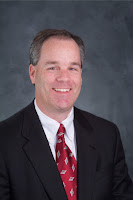The following is a guest post from NEI Senior Vice President of Communications Scott Peterson, reporting from the 59th General Conference of the IAEA .
With the 21st session of Conference of the Parties (COP) to the United Nations Framework Convention on Climate Change (UNFCCC) just 10 weeks away, one hopes that this week’s United Nations conference in Vienna is setting the stage for negotiations around meeting the 2-degree reduction by 2050.
 |
| Scott Peterson |
With the 21st session of Conference of the Parties (COP) to the United Nations Framework Convention on Climate Change (UNFCCC) just 10 weeks away, one hopes that this week’s United Nations conference in Vienna is setting the stage for negotiations around meeting the 2-degree reduction by 2050.
Leaders at the International Atomic Energy Agency (IAEA), meeting today in the opening session of its general conference, echoed a resounding statement of support for nuclear energy to increase its share of electricity production globally as one way to meet the carbon reduction challenge. Nearly 440 reactors in 30 countries generate 11 percent of the world’s electricity.
“Nuclear power is one of the lowest emitters of carbon dioxide among energy sources when emissions through entire life cycles are considered,” IAEA Director General Yukiya Amano said. “Nuclear power has low environmental impact and leads to significant avoidance of greenhouse gas emissions.”
“I believe that appropriate consideration should be given to nuclear power in talks on climate change mitigation which are taking place under the United Nations Framework Convention on Climate Change” in December, Amano said. “The agency’s assistance to countries starting new nuclear power programs is paying off in tangible results.”
The industry is expanding nuclear energy beyond 438 commercial reactors, including five reactors being built in the Southeast and advanced reactor designs in various stages of development.
Meeting the 2-degree reduction may sound uncomplicated, but it will require a blend of all carbon-free sources, energy efficiency and conservation, and constant innovation to meet that goal while population and electricity demand rises. It will be even more difficult if carbon capture for natural gas- and coal-fired power plants continues to lag.
The buzz in the IAEA hallways intensified further after Secretary of Energy Ernest Moniz addressed the conference.
“As we approach the upcoming Paris climate negotiations, countries must put forward ambitious climate commitments,” he said. “The threat of climate change calls for global responses, including expanded use of nuclear power to produce the electricity needed to sustain rising standards of living of the world’s growing population.”
As we approach the upcoming Paris climate negotiations, the threat of #climate change calls for expanded use of nuclear power. -@ErnestMoniz
— DOE Press Staff (@EnergyPressSec) September 14, 2015
The administration and Congress are partnering with U.S. industry to support the licensing and technical support of small modular reactor designs, which could begin the Nuclear Regulatory Commission licensing process next year. By incorporating “passive” safety systems into SMRs and new large reactor designs, the industry aims to provide a broader set of options for safe, reliable nuclear energy, Moniz said.
“President Obama has made clear that nuclear energy is an important part of our ‘all-of-the-above’ energy strategy,” he added. “In partnership with our nuclear industry, the U.S. government is supporting the deployment of reactors with passive safety features both in the United States and around the world.”
Democrats in Congress also support nuclear energy as an option for the upcoming negotiations on worldwide policies for meeting the UNFCCC targets.
“It’s clear that moving toward a safe, efficient and modern nuclear fleet should be an important part of our nation’s effort to combat climate change. That is why I’m pleased to see progress is being made on the construction and licensing of the first four new commercial power reactors in decades,” Rep. Frank Pallone, the ranking Democrat on the House Energy and Commerce Committee, said during an NRC oversight hearing last week. “Advancements in nuclear technology, particularly in the area of small modular reactors, hold the possibility of a newer, safer generation of nuclear power.”
In the meantime, Pallone is keeping his eye on issues, such as demonstrating that new reactors can be brought online in a timely and cost-effective manner, maintaining safety in a post-Fukushima world, and meeting the financial strain of an electricity market characterized by some of the low natural gas and renewable energy prices.
“I believe there is an important role for nuclear energy to play in addressing global climate change, but I want to make perfectly clear that safety must come first,” Pallone said.
No argument here. That’s also why sidebar events at the IAEA’s conference are sharing lessons learned on safety, human resources and other issues.
To further complement the policy dialogue this week, Scientific American’s David Biello reveals a new study that points to the role of nuclear energy for countries seeking to reduce carbon emissions and should prompt dialogue among the U.N. delegates meeting in Paris.
“If we are serious about tackling emissions and climate change, no climate-neutral source should be ignored," argues Staffan Qvist, a physicist at Sweden’s Uppsala University, who led the effort to develop this nuclear plan. "The mantra 'nuclear can't be done quickly enough to tackle climate change' is one of the most pervasive in the debate today and mostly just taken as true, while the data prove the exact opposite."
The discussion of nuclear energy’s current and future role in meeting increasing electricity demand and maintaining international development—all while preventing carbon emissions and other air pollutants—was advanced in Vienna this week. It would be a mistake of grave proportion if it doesn’t translate to the United Nations’ carbon reduction discussions at COP21.
Comments